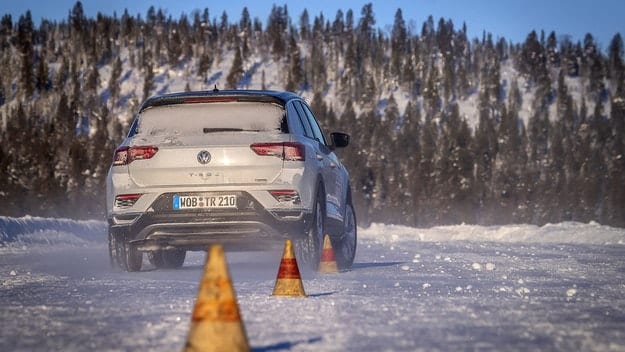
The best winter tires for compact SUV models
Content
- Testing eleven winter tire models in the size 215/55 R 17 H / V
- In the cold, on wet roads, in border mode
- Goodyear UltraGrip Performance Plus (winner test)
- Bridgestone Blizzak LM005
- Vredestein Wintrac Pro
- Continental TS 850 P
- Michelin Alpin 6
- Hankook I * CEPT EVO²
- Falken Eurointer HS01
- Toyo Snowprox S954
- Pirelli Sottozero 3
- Giti Winter W1
- This is how we made the test
Testing eleven winter tire models in the size 215/55 R 17 H / V
For compact SUV owners, driving pleasure continues into the winter months. The prerequisite for this is the highest possible level of safety - maximum traction on different, rain-wet or snow-covered roads. What are the best winter tires for VW T-Roc and company?
The progress of off-road models seems unstoppable - but a large number of sales do not fall on the huge weightlifters among them. The most popular are compact models from the Opel Mokka, Seat Ateca or VW T-Roc breeds, which are rarely bought with double, but much more often with front-wheel drive. For these domesticated Golf SUVs in their usual urban environment, this leaves little to no disadvantage, except for slippery winter streets. In situations like this where we've given up on the year-round high cost of a dual drivetrain, winter tires come to the rescue. But what?

Of the T-Roc 215/55 R 17 winter tires recommended for testing cars, the range on the market is more than rich, and we have selected the most interesting products for you and included them in our tests. The Continental TS 850 P, which proved to be the winner of last year's winter race, now competes with three debut models - the recently introduced Bridgestone Blizzak LM005, the improved Goodyear UltraGrip Performance Plus and the recently released Nokian WR Snowproof - which they claim are specially optimized for winter conditions. in Central and Western Europe. From the upper end, the new Michelin Alpin 6 is still in testing, and from the mid end, the Vredestein Wintrac Pro, the Pirelli Winter Sottozero 3, the Toyo Snowprox S954 introduced in 2018, and the Hankook i*cept evo² approved since 2015. We included the Falken Eurowinter HS01 and Giti Winter W1 as cheap alternatives in the test.
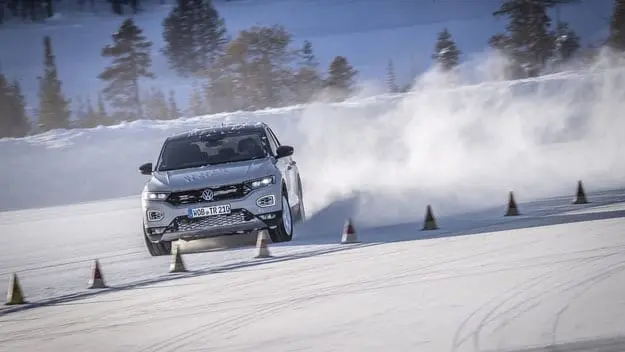
In the cold, on wet roads, in border mode
Northern Finland welcomes test team with storm and freezing temperatures. Blows from snow and cold to minus 20 degrees make testing nearly impossible at first. Results in such sub-zero temperatures are not well suited to winter tires designed for Western European conditions. In their regions, they should show their good snow qualities from 0 to minus 15 degrees - the temperature range that, ideally, we aim for when testing.
We were lucky - the mean spring sun brings the first breath of warmth to the polar region, the thermometer rises, and the test passes at a high speed. In one or two days we will have the first result: on snow, the new Goodyear UltraGrip Performance Plus is unbeatable. It remains to be seen if they will retain their lead in wet and dry tests.
We will check this four weeks later when a show with tests for stopping, aquaplaning and noise, as well as tests for processing and changing lanes, will be held at a training ground in northern Germany. In addition to the five snow disciplines, each tire model is tested and evaluated according to twelve other criteria. Goodyear barely managed to maintain its leadership. Bridgestone almost surpasses them in the characteristics on wet road. Vredestein are close to them with slight snow defects, Continental is also one of the four best with good performance on dry and wet tracks. Michelin, Hankook, Falken and Toyo scored good, Pirelli, Giti and Nokian, who work well on snowy and dry roads, show satisfactory results. However, they lose their chances of being “good” due to too much braking distance (criterion for punitive decrease in slope) and too little traction on wet roads.
Goodyear UltraGrip Performance Plus
(winners test)
- Extremely reliable and easy to control throttle response, predictable behavior on snowy and wet roads
- Safe dry stop
- Extremely balanced interaction with the electronic dynamics control system (ESP).
- Lack of traction on fast cornering on dry asphalt
Conclusion: the best winter tires with the best traction in the snow and safe cornering on wet roads (8,9 points, very good).
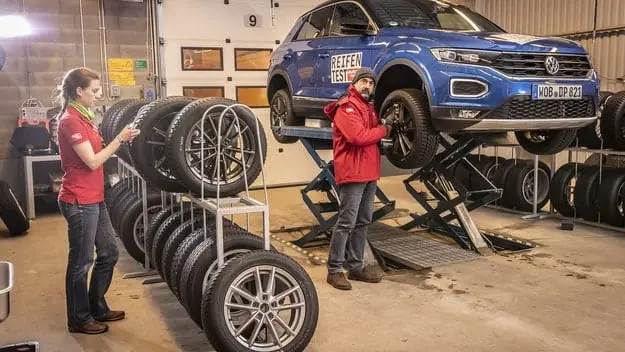
Bridgestone Blizzak LM005
- Very accurate on snowy and wet roads
- With easily predictable gas withdrawal reactions, but stable and very safe
- Short braking distances
- Minor flaws at high speeds in corners and when stopping on dry pavement
Conclusion: An extremely safe new product with a short braking distance on wet roads and in snow (8,8 points, very good).
Vredestein Wintrac Pro
- Direct, sporty response to steering movements with a large margin of traction, especially on wet and dry corners, safe braking.
- Except for suspension, safe operation and good traction in the snow.
- Compared to regular winter products, the braking distance in the snow is slightly larger
- Increased rolling resistance.
Conclusion: with good grip on wet and dry roads, lightly on snow, recommended for flat areas (8,3 points, very good).
Continental TS 850 P
- Basically stable and, above all, extremely balanced dynamics with easily predictable lateral grip in the snow
- Easy to control with pronounced wet grip
- Safe understeer
- Especially when stopping on snow and dry asphalt, new developments are ahead
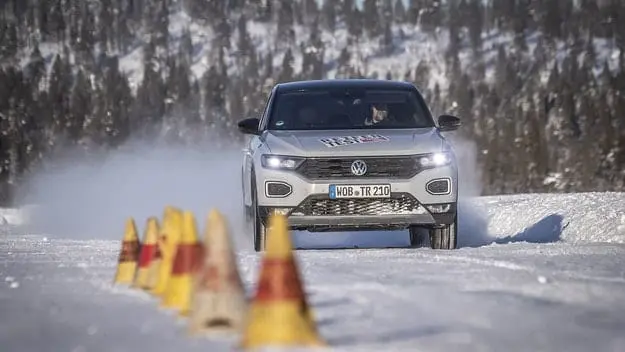
Conclusion: although they have been in production for five years, they still have very good universal qualities (8,1 points, very good).
Michelin Alpin 6
- Significantly balanced snow and dry road qualities
- Pretty safe wet cornering behavior
- Good interaction with road dynamics management systems
- minor defects when stopping snow and moisture
- Lack of traction when driving fast in dry corners
Conclusion: an elite product, most often with good characteristics in dry, but limited winter weather (7,9 points, good).
Hankook I * CEPT EVO²
- Very good traction and balanced dynamics of the road and a large margin of safety on snowy bends
- Sporty-straight and strong in cornering on dry pavement
- Extremely quiet tires
- Great braking distance on dry pavement
- Not well balanced with a narrow boundary zone during wet processing
- High rolling resistance
Conclusion: professional winter tires with good snow qualities, but with slight flaws on the wet road (7,6 points, good).
Falken Eurointer HS01
- Great side grip
- Slightly susceptible to slipping during acceleration and good snow stop
- Very good aquaplaning prevention
- The relationship between linear and lateral traction of snow requires getting used to
- Lack of grip on wet roads and limited turning on dry pavement
Conclusion: winter tires of the middle class with good snow performance, but with flaws on the wet road (7,4 points, good).
Toyo Snowprox S954
- Sporty-straight and steady with plenty of traction in dry corners.
- Increased stopping distance in all conditions
- poor feedback on snow and wet roads
- Slight tendency to oversteer when removing throttle in wet corners
Conclusion: for weak spots in the snow and on wet roads, the sportiest winter tires are on dry roads (7,3 points, good).
Pirelli Sottozero 3
- Very well-balanced opportunities and as a direction of sports-direct behavior on dry asphalt
- Mostly satisfactory in snow and wet.
- longer braking distance in the snow
- Grip could be better.
- Weaknesses when wet
- Poor aquaplanin prophylaxis.
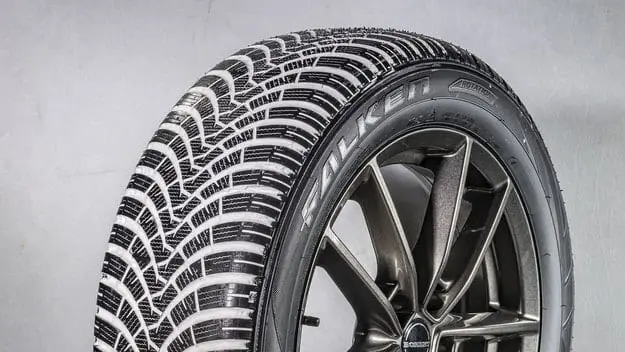
Conclusion: Balanced sports Pirelli prefers dry winters due to small wet defects (7,0 points, satisfactory).
Giti Winter W1
- Very short braking distance and good traction on dry pavement.
- No more than satisfactory dynamic characteristics with a large braking distance, low grip and a narrow border of snow
- Poorly balanced in wet handling
- severe dryness
- slight deafening rolling noise
Conclusion: cheap products with a lower level of capabilities, but without significant drawbacks (6,9 points, satisfactory).
Nokian WR Snowproof
- Safe and easy to manage snow
- Except wet coatings on short braking distances
- Generally safe behavior
- Long braking distances and relatively poor wet grip
- Sensitive to traction changes.
Conclusion: very good in dry and good in snow. Too weak traction on wet roads - they are unconvincing here! (6,2 points, satisfactory).
This is how we made the test
To ensure the most accurate and reliable results, all experiments in this test are carried out repeatedly, if conditions permit. A progressive assessment scheme is used, which equally takes into account objective assessment using measuring instruments and subjective scoring by experienced test pilots. In snow processing tests, as well as on wet and dry surfaces, a balanced, safe and meeting the expectations of the intended behavior of the road of the target group leads to optimal estimates. Tests of aquaplaning, respectively longitudinal and transverse, give information about the reaction of tires, for example, when passing deep ruts on asphalt. The value of the critical rate of loss of contact with the road when driving in the forward direction or the lateral acceleration achieved when passing through the flooded area in accordance with the VDA criteria should indicate the safety margin of the respective tires. Their rolling resistance is measured, if possible, in various drum cage testing laboratories. The results participate in the estimates as mean values. The basis for the assessment is European law, valid for categorization on tire labels. In order to ensure the validity of the test results, in the subsequent tests we compare some of the tested products with tires purchased later from the nearest dealers. Our focus is on the three best models in the test, as well as products that showed atypically good qualities or unusual signs of wear. Deviations or other detected features lead to exclusion from the ranking in the large test, accompanied by a corresponding message.

